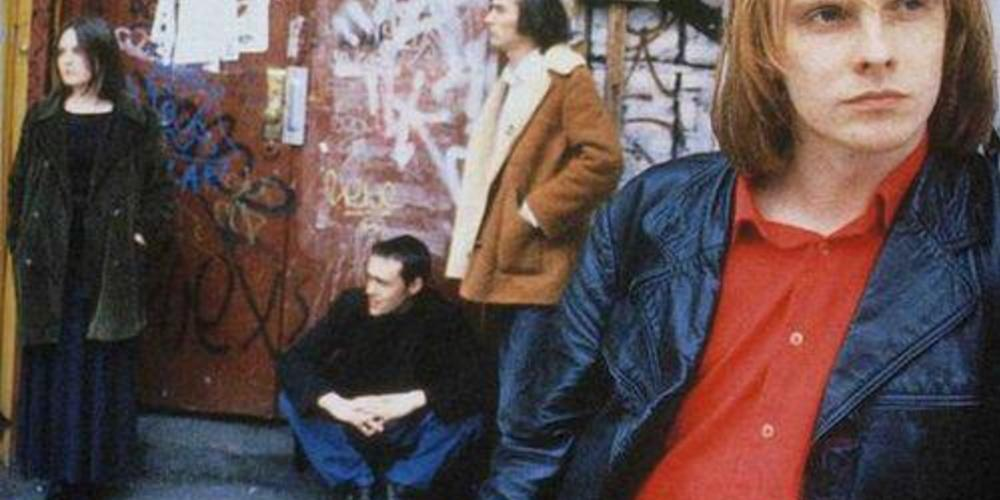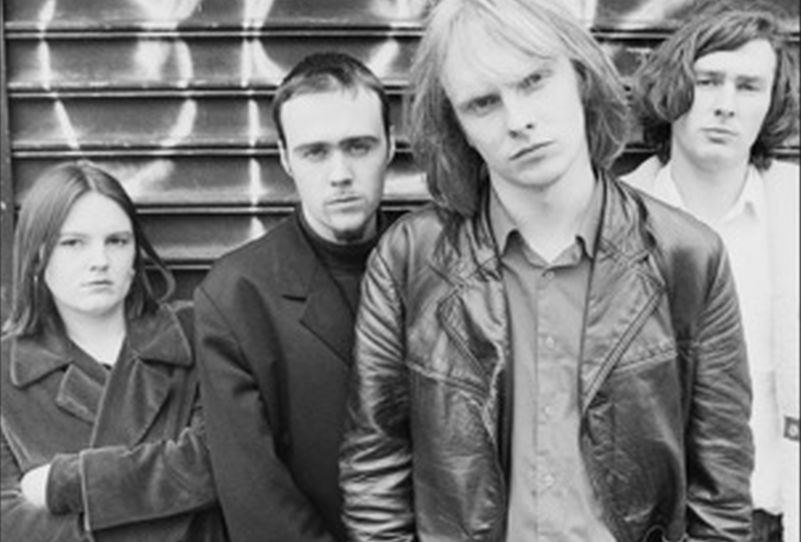
When the Auteurs released their debut album in 1993, the British press linked them with the massively popular Suede as part of a “glam revival.” While the band could blast out guitar-drenched rockers like Suede, the Auteurs came to life when they drew from the quiet side of such distinctively English guitar pop bands like the Kinks, and the Smiths, The Auteurs were a British alternative rock band of the 1990s, and a vehicle for songwriter Luke Haines who played guitar, piano and vocals. Formerly a member of the Servants, Haines created the Auteurs with his then-girlfriend Alice Readman on bass guitar, former classmate Glenn Collins on drums, and later added James Banbury on cello.
Luke Haines, the group’s guitarist, vocalist, and songwriter, wrote highly melodic pop songs that combined airy melodies along with the cutting social observations of Davies; they were sharp, intelligent songs, full of humour and gorgeous melancholy, even when loudly rocking. With their first two albums, “New Wave” and “Now I’m a Cowboy”, they earned a devoted cult in the U.K. without gathering much support in the United States. By the time the group released the Steve Albini-produced in early 1996 “After Murder Park”, by then they had even lost most of their cult audience in the U.K.
Accordingly, the album didnt do very well even on the indie charts. Before its release, Haines had dropped hints in interviews that the record might be the Auteurs’ last.
Six months later, he released an album with his side project, Baader Meinhof, although a new Auteurs record, “How I Learned to Love the Bootboys”, appeared in 1999. Haines then focused his energy on Black Box Recorder for a few years, released a pair of solo albums in 2001, and re-recorded several Auteurs songs with an orchestra for 2003’s “Das Capital”.
While an official break-up was never announced, Luke Haines continued to work primarily as a solo artist well in to the 2010s.
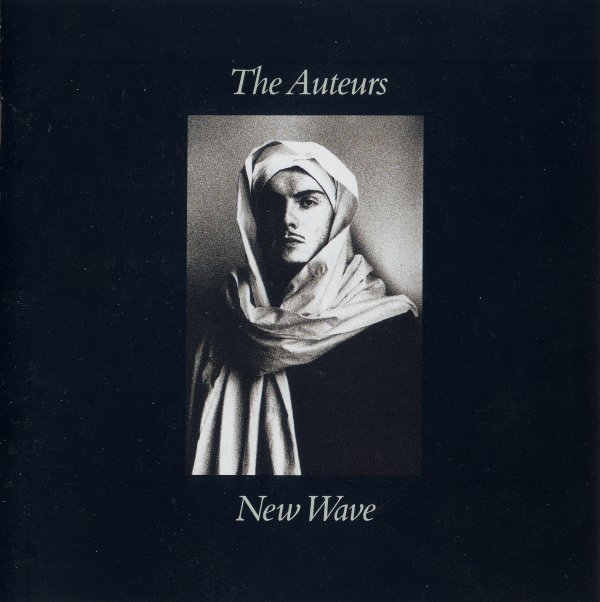
New Wave
The Auteurs demo tape and gig led to the band gaining a recording contract with Hut. Their first single “Show Girl” was praised by the British music magazine Melody Maker and the album “New Wave” (1993) was nominated for a Mercury Music Prize.
With their 1993 debut album, “New Wave”, the Auteurs established themselves as one of England’s best guitar bands of the early ’90s. Driven by the bittersweet, ironic song writing of Luke Haines, the band’s carefully crafted, three-minute pop songs are in the vein of the Kinks, the Smiths, and the Beatles, Yet the Auteurs never sound like imitators — they combine their influences into a signature sound, distinguished by Haines’ sharp lyrics and sighing melodies. [3 Loop’s 2014 reissue features remastered sound and 22 additional tracks, including B-sides, acoustic versions, demos, and a BBC session. Haines provides liner notes.]
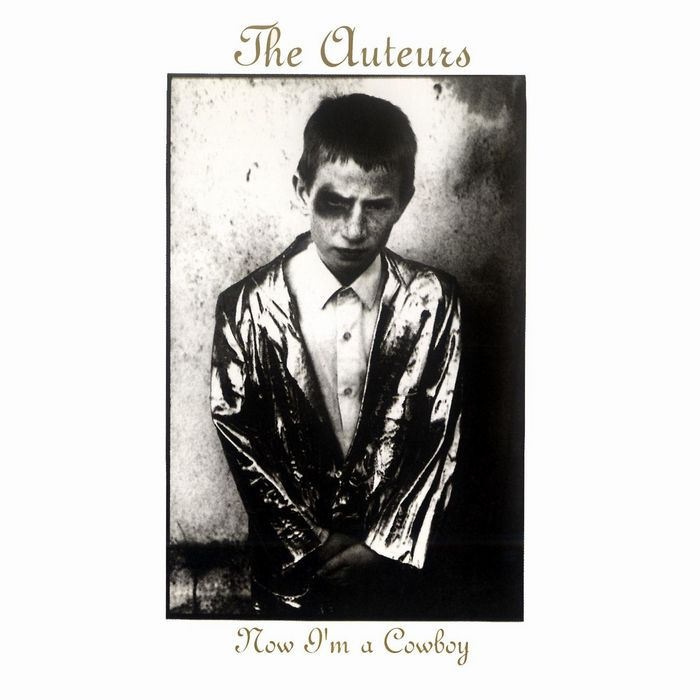
Now I’m a Cowboy
Their next album “Now I’m a Cowboy” (1994), built on the themes of “New Wave” and contained Haines’ best known song, “Lenny Valentino”, “Brainchild” may have informed the title of the Auteurs‘ sophomore album, “Now I’m a Cowboy“, but it was the sneering, in-with-the-hip-crowd antics of the opening “Lenny Valentino” which flew in the face of the light retro-pop the band wielded just a year earlier. Rougher, sexier, more slipshod than before, this song had a lot to say, and the band was right behind it. But that’s not to imply that the band didn’t carry itself with equal aplomb across the rest of the set. The Auteurs blazed through a mixed mutant bag of smoothies and deadlies, where every title read like a trip around the world.
Meanwhile, pre-empting all that Pulp would later perfect, Luke Haines‘ feral lyricism touched on the struggle of upper and lower classes and the horror that falls when they collide. “New French Girlfriend” hashed Haines‘ vocals to bits with a yummy guitar, while “Chinese Bakery” is an off-kilter rock rampage across streets that slice uptown and downtown, leaving “The Upper Classes” to fill the breach.
Elsewhere, both “Life Classes/Life Model” and the sordid claustrophobia of “Underground Movies” emerge as biting commentary. “Now I’m a Cowboy” served the Auteurs well, becoming an edgily delicious bridge between their immediate past and their enduring future. Dig a little deeper and add a pinch of hindsight, however, and it’s also easy to discern the treasure trove of embryonic nuggets that would later surface in Haines’ Baader Meinhof and Black Box Recorder solo projects.
this was their breakthrough album “Now I’m a Cowboy”. As Haines has pointed out, this happened only because Radio One acquired a new controller who culled the old DJs and put indie music-loving former NME journalists in their place, but for a brief moment lunatics such as Haines and, to a greater extent, Jarvis Cocker and Noel Gallagher really did take over the asylum.
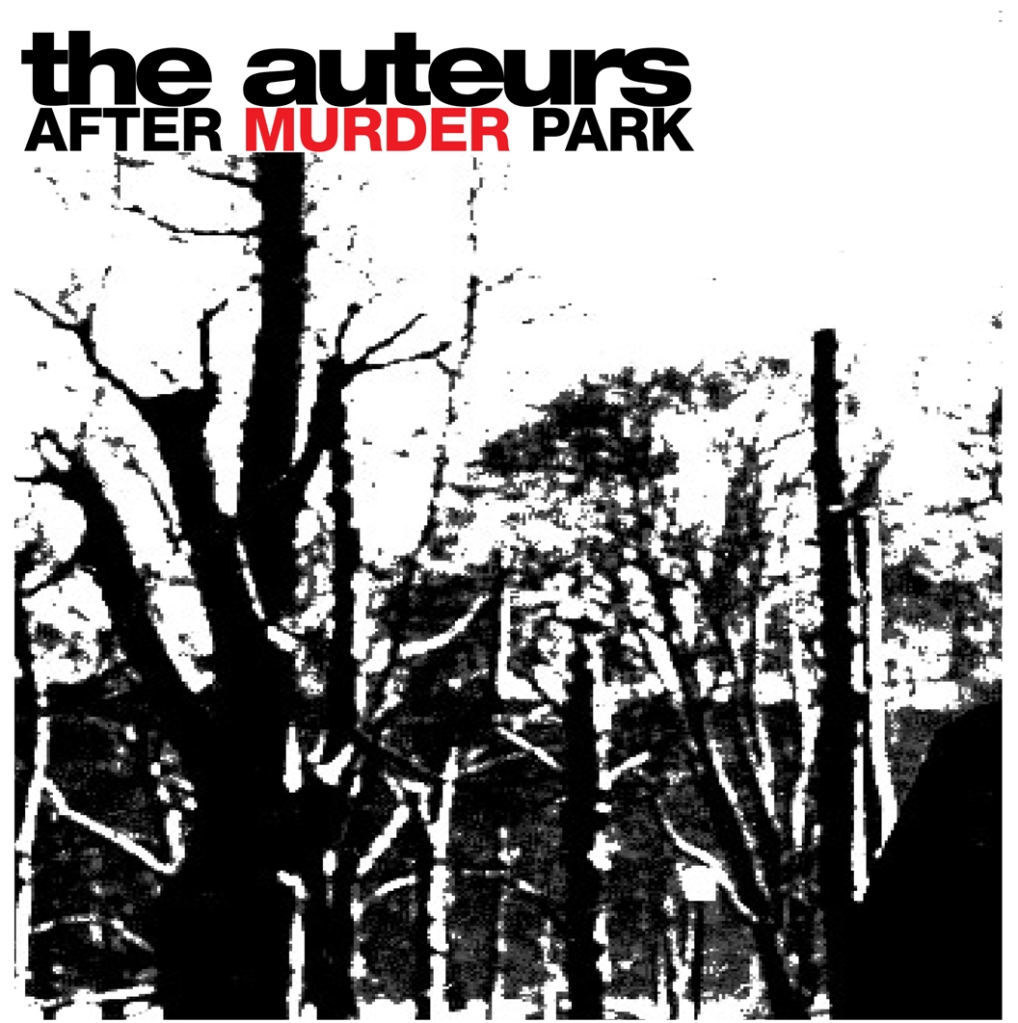
After Murder Park
The pairing of two curmudgeons like Luke Haines and Steve Albini in a studio seems like a marriage made in heaven to some, and the very thought triggers an instant headache to others. The Auteurs are unlike the typical downtrodden U.S. indie bands Albini usually works with, but they nonetheless walked out of Abbey Road Studios following a year during which Haines had spent most of his time in a wheelchair after jumping off a wall. With their nastiest-sounding record. That’s probably what Haines wanted, and that’s what he got. Grittier guitars and sharper drums don’t get in the way of the more intricate arrangements that involve strings and a dash of horn every now and then.
First single “Light Aircraft on Fire” is probably the most feisty Haines song yet, kicking down the doors with the opening line, “When you cut your lover’s slack, you’ll get a f*cking monster back.” Haines’ guitar lines sparkle during the chorus but dig like claws during the verses. Ace utility man James Banbury, in his usual Auteurs role as secret weapon, contributes threatening organ swells during the seething “New Brat in Town.” “After Murder Park” serves the usual combo platter of growlers and barbed lullabies, but Haines definitely sounds more embittered than usual, quite possibly the result of watching too many of Albini’s wildlife videos.
He paints plenty of “sucks to be you” scenarios with sneering flair, exposing the corrupted side of humanity just as well as his engineer when he’s on the other side of the glass. Not many fates could be worse than having Haines write a song with you as the subject, but listening to him air his insightful dirty laundry is an entirely unique experience. Pretentious and snotty as Haines might be, he’s one of the sharpest tools in the shed.
Haines made the Baader Meinhof album as a solo artist under the name Baader Meinhof, using some musicians from the Auteurs. The Auteurs supported Baader Meinhof at a London show in Camden’s Dingwalls for a one off show.
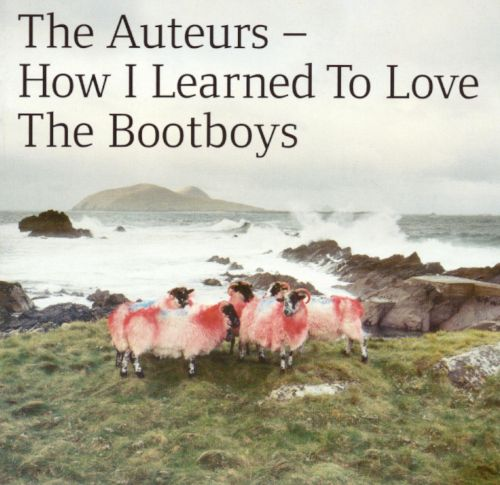
How I Learned to Love the Bootboys
The most refined of England’s bands manages to refine itself even further on their fourth disc. “How I Learned to Love the Bootboys” is Luke Haines‘ most immediate sounding release to date, and even though his claim that each of the record’s 12 tracks are singles sounds a bit highfalutin, he’s not far off. While each of the Auteurs’ three prior LPs are equally arresting, there are points at which the mind tends to wander, but not here. Haines’ familiar themes of Englishness, youth, and hooliganism remain, playing like another short movie. The cohesiveness of the record is no small feat, given the wide-ranging sounds and moods.
Opening bedroom tale “The Rubettes” features a delicate, Brill Building lullaby chorus while a repetitive staccato riff offplays the fragility. The title track’s quiet chaos has Haines‘ whispered vocals buttressed by sirens, percolating electro bleeps, and a graceful dub bassline. “Your Gang Our Gang” relocates the fight scenes of Grease and West Side Story to the streets of London with equal doses of menace and tongue-in-cheek. Tough and joyful at the same time. Alice Readman left the band around the time of the last album, and was replaced by various musicians for live/touring purposes.
Luke Haines and Pete Hofmann attain the band’s best production yet. Haines’ guitar has never sounded so fittingly sharp while avoiding abrasiveness. Even guitar guru Steve Albini couldn’t coax such an ideal sound from his guitar. Haines’ supporting cast punches in with some excellent work, providing all the necessary support for an excellent record. Surely the few who have stuck around since “New Wave” are being spoiled rotten by the Auteurs’ remarkable consistency.
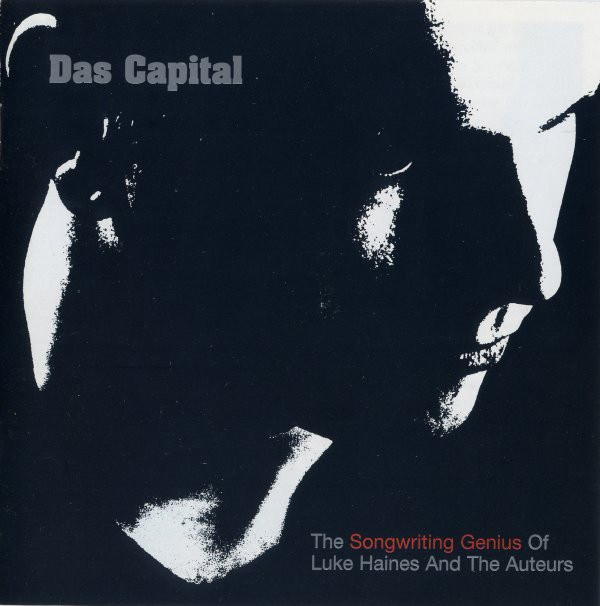
Das Capital
2003 saw him release “Das Capital”, a collection of re-recorded Auteurs era songs, with a couple of new tracks, apparently intended as closure for that band.”Hostalgia” is a term Luke Haines uses in the liner notes to “Das Capital”. He’s hostile towards nostalgia, and yet he didn’t let that get in the way of making new versions of old songs that were written throughout a bygone decade. Haines felt the songs were “slipping out of view,” so he went about re-recording them with full orchestra backing. The result is much more preferable to the cheap-fast “best of” routine that would’ve occurred, had the case been left up to someone else. As far as what songs were picked, it’s not quite the best representation imaginable; neither “Bailed Out” nor “Light Aircraft of Fire” receive new looks, for instance. Shortly into the disc, it becomes apparent that it’s intended to be taken as a record in its own right, not as a case of freshly polished trophies.
The ornate, expansive arrangements that unfold and sway throughout make it all ideal for a large concert hall. Given the characters and happenings present in Haines‘ songs — from showbiz kids to showgirl brides, from child murders to buildings set aflame — it’s only a matter of time before some troupe stitches together pieces of his back catalogue for their own Mamma Mia. Three new songs fit into the scheme, all of which show that the prospect of a fifth proper Auteurs record is a necessary thing. “Satan Wants Me” is prime Haines, with slaying lyrics, ensnaring hooks, stop-start dynamics, and dizzying swirls of strings. On the “New Wave” standard “Starstruck,” Haines is even more vulnerable than he was on the original, pushed further in that direction by the epic garden music that supports him. Whether considering his own work or the material he’s dealt with songwriting partner John Moore in Black Box Recorder, Haines has proved himself to be one of England’s greatest, sharpest, most sinister pop songwriters.
The unfortunate thing is that, instead of introducing his work to a new crop of people, “Das Capital” is more likely to function as a gift for the select few who have been following his work since “New Wave“. The select few will also enjoy reading Haines’ liner notes and reviews of his own records, provided here, complete with star ratings.
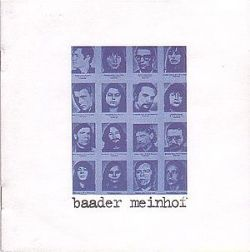
Baader Meinhof
Essentially a Luke Haines solo album, Baader Meinhof was originally released in September1996. Taking its name from two renowned members of The Red Army Faction, the album tells the story of the organisation and was recorded by Haines between Auteurs albums.
Long unavailable, the album has been remastered and expanded with five bonus tracks, including four previously unreleased tracks taken from a remix EP that was never commercially released.
The album will come with brand new sleeve-notes by Luke Haines.
Haines released a book entitled Bad Vibes, which serves dually as an autobiographical account of his years with the Auteurs, and as a record of the Britpop movement of the 1990s this association was not liked by Haines, who frequently made derogatory remarks about his peers. Throughout the book, he never refers to James Banbury by name, simply referring to him simply as “the Cellist”, although he is named in full in the acknowledgements.
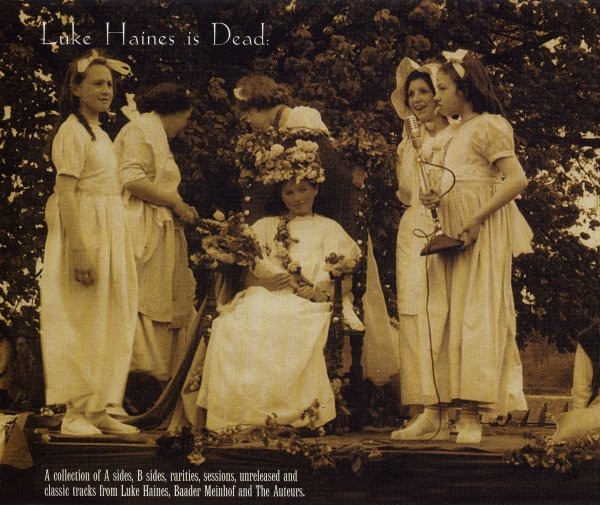
In 2014, British independent label 3 Loop Music re-released all of the Auteurs’ albums (along with Haines’ “Baader Meinhoff” album) as expanded editions which featured b-sides, demos, radio session tracks, live recordings and remixes. “New Wave” and “Baader Meinhoff” were also re-released by the label on heavyweight 180gsm vinyl.
Studio albums:
- New Wave (1993)
- Now I’m a Cowboy (1994)
- After Murder Park (1996)
- How I Learned to Love the Bootboys (1999)
EPs
- Live Acoustic EP (1993)
- The Auteurs Vs. µ-Ziq (remixes), (1994)
- Back with the Killer (1995)
- Kids Issue (1996)
